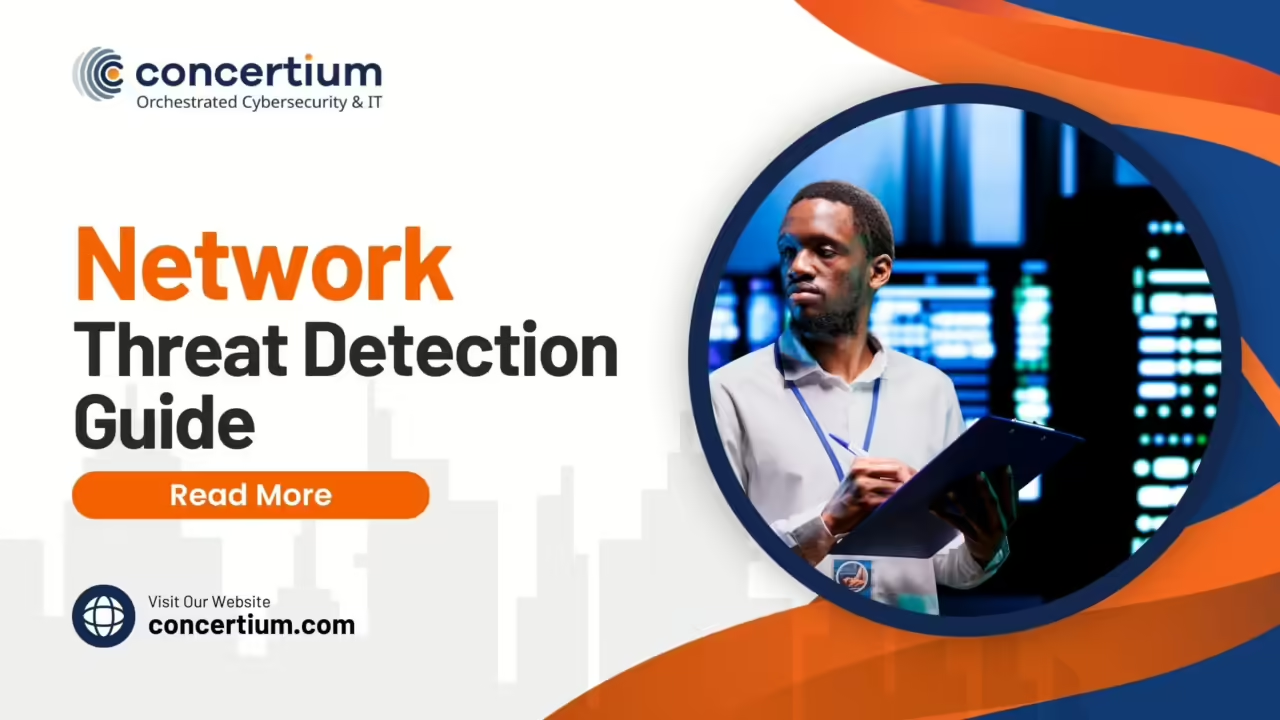Network Threat Detection and Response
Network threat detection has become a critical component of cybersecurity. Organizations face a constant barrage of cyber threats, ranging from malware and ransomware to sophisticated advanced persistent threats (APTs). To safeguard sensitive data and maintain business continuity, it is essential to detect and respond to these threats swiftly.
This guide provides a comprehensive overview of network threat detection and response, offering insights into the tools, technologies, and best practices that organizations can implement to enhance their cybersecurity posture.

Understanding Network Threat Detection
What is Network Threat Detection?
Network threat detection refers to the process of identifying malicious activities or potential threats within a network. This involves monitoring network traffic for signs of unauthorized access, malware, or other forms of cyber attacks. Effective threat detection systems can differentiate between normal network behavior and suspicious activities, enabling security teams to take proactive measures before a threat escalates.
Key Components of Network Threat Detection Systems
Network threat detection systems comprise several critical components that work together to identify and mitigate threats:
- Detection Systems and Tools: These include a variety of hardware and software solutions designed to monitor network traffic and identify anomalies.
- Visibility and Network Traffic Analysis: Visibility into network traffic is crucial for detecting threats. Tools that analyze network traffic patterns help in identifying unusual activities that may indicate a cyber threat.
Types of Threat Detection
There are several approaches to threat detection, each with its own strengths and weaknesses:
- Signature-Based Detection: This method relies on predefined signatures of known threats. While effective against known threats, it may not detect new or unknown threats.
- Anomaly-Based Detection: This approach identifies deviations from normal network behavior, which can indicate potential threats. It is effective in detecting previously unknown threats.
- Behavioral Detection: Behavioral detection analyzes the behavior of users and devices to identify suspicious activities. This method is particularly useful for detecting insider threats.
- Machine Learning and Behavioral Analytics: Advanced threat detection systems often employ machine learning algorithms to analyze large volumes of data and identify patterns indicative of malicious activities.
Advanced Threat Detection Techniques
Advanced Threat Detection and Response
Advanced threat detection and response go beyond traditional methods to identify sophisticated threats that evade standard detection techniques. These systems use a combination of machine learning, behavioral analytics, and threat intelligence to provide a more comprehensive view of potential threats.
Threat Intelligence and Threat Hunt
- Threat Intelligence: Threat intelligence involves gathering and analyzing data about current and emerging threats. This information helps security teams stay ahead of potential threats by understanding the tactics, techniques, and procedures (TTPs) used by threat actors.
- Threat Hunt: Threat hunting is a proactive approach to identifying threats that may have bypassed initial defenses. Security analysts use threat intelligence and advanced tools to search for indicators of compromise (IOCs) and other signs of malicious activity within the network.
Tools and Technologies in Network Threat Detection

Intrusion Detection Systems (IDS)
Intrusion Detection Systems (IDS) are critical for identifying unauthorized access and other suspicious activities within a network. There are two main types of IDS:
- Network-Based IDS (NIDS): Monitors network traffic for signs of malicious activity. It analyzes traffic patterns and can detect attacks such as port scanning and denial-of-service (DoS) attacks.
- Host-Based IDS (HIDS): Monitors the activities on individual devices within the network. It is effective in detecting changes to system files and unauthorized access attempts.
Endpoint Detection and Response (EDR)
Endpoint Detection and Response (EDR) solutions focus on monitoring and protecting endpoint devices such as laptops, desktops, and servers. EDR tools provide real-time visibility into endpoint activities and can quickly detect and respond to threats. Benefits of EDR include:
- Enhanced Endpoint Security: By continuously monitoring endpoint devices, EDR solutions can detect and respond to threats in real-time.
- Comprehensive Threat Detection: EDR tools can identify a wide range of threats, including malware, ransomware, and unauthorized access.
Security Information and Event Management (SIEM)
Security Information and Event Management (SIEM) systems play a crucial role in network threat detection by collecting, analyzing, and correlating security data from various sources. Key benefits of SIEM include:
- Centralized Security Information: SIEM systems aggregate data from across the network, providing a comprehensive view of the organization’s security posture.
- Advanced Analytics: SIEM tools use advanced analytics to identify patterns and anomalies that may indicate a security threat.
Implementing Effective Threat Detection
Developing a Threat Detection Program
Creating an effective threat detection program involves several key steps:
- Define Objectives: Clearly outline the goals and objectives of the threat detection program.
- Select Appropriate Tools: Choose the right tools and technologies that align with the organization’s needs.
- Establish Monitoring Processes: Implement continuous monitoring processes to detect threats in real-time.
- Train Security Teams: Ensure that security teams are well-trained in using threat detection tools and responding to incidents.
Utilizing Threat Detection Tools
There are various tools available for threat detection, each serving different purposes:
- Intrusion Detection Systems (IDS): As discussed earlier, IDS are essential for monitoring network traffic and identifying potential threats.
- Endpoint Detection and Response (EDR): EDR solutions provide real-time visibility into endpoint activities.
- SIEM Systems: SIEM tools aggregate and analyze security data from multiple sources.
Choosing the right combination of tools is crucial for effective threat detection.
Automating Threat Detection and Response
Automation in Threat Detection
Automation plays a vital role in enhancing threat detection capabilities. Benefits of automation include:
- Faster Detection and Response: Automated systems can detect and respond to threats more quickly than manual processes.
- Improved Accuracy: Automation reduces the risk of human error and increases the accuracy of threat detection.
Automated Threat Detection Systems
Automated threat detection systems leverage advanced technologies such as machine learning to identify threats in real-time. Examples of automated systems include:
- AI-Driven Threat Detection: These systems use artificial intelligence to analyze network traffic and detect anomalies.
- Automated Incident Response: Automated systems can initiate predefined response actions when a threat is detected, reducing the time to mitigate the threat.
Best Practices for Network Threat Detection

Effective Threat Detection and Response Strategies
Implementing effective threat detection and response strategies involves several best practices:
- Continuous Monitoring: Ensure continuous monitoring of network traffic and endpoint activities.
- Regular Updates: Keep threat detection tools and systems updated with the latest threat intelligence.
- Incident Response Planning: Develop and maintain a comprehensive incident response plan to address detected threats promptly.
Network Detection and Response Best Practices
Best practices for network detection and response include:
- Comprehensive Coverage: Ensure that detection systems cover all parts of the network, including endpoints, servers, and network devices.
- Integration of Tools: Integrate various threat detection tools to provide a unified view of the network’s security posture.
- Proactive Threat Detection: Implement proactive measures such as threat hunting and regular vulnerability assessments to identify potential threats before they cause harm.
By following these guidelines, organizations can significantly enhance their network threat detection and response capabilities, ensuring a robust cybersecurity defense against evolving threats.
Enhancing Threat Detection Capabilities
Advanced Threat Detection Technologies
The rapidly evolving landscape of cyber threats necessitates the use of advanced technologies to enhance threat detection capabilities. Some of the latest advancements include:
- Artificial Intelligence (AI) and Machine Learning (ML): AI and ML are at the forefront of modern threat detection. These technologies enable systems to learn from historical data, recognize patterns, and predict potential threats. AI-driven threat detection systems can analyze vast amounts of data quickly and accurately, identifying anomalies and suspicious activities that traditional methods might miss.
- Behavioral Analytics: Behavioral analytics focuses on understanding normal user behavior to detect deviations that may indicate a threat. By analyzing patterns of user and device behavior, these systems can identify unusual activities that could signify malicious intent.
- Advanced Threat Intelligence Platforms: These platforms aggregate data from multiple sources, providing comprehensive insights into emerging threats. They use this intelligence to update detection systems continuously, ensuring they are equipped to handle the latest threats.
Comprehensive Threat Detection Systems
A comprehensive approach to threat detection involves integrating various tools and technologies to provide a holistic view of the network’s security posture. This includes:
- Network Traffic Analysis: Monitoring and analyzing network traffic patterns to identify anomalies that may indicate a threat.
- Endpoint Monitoring: Continuous monitoring of endpoint devices to detect and respond to threats in real-time.
- Intrusion Detection and Prevention Systems (IDPS): Combining detection and prevention capabilities to identify and block threats before they can cause harm.
Responding to Detected Threats
Threat Response Capabilities
Effective threat response capabilities are essential for minimizing the impact of detected threats. Key components of an effective threat response include:
- Incident Response Teams (IRTs): Dedicated teams responsible for managing and responding to security incidents. These teams should be well-trained and equipped with the necessary tools to handle various types of threats.
- Automated Response Actions: Implementing automated response actions to reduce the time taken to mitigate threats. Automated systems can execute predefined actions, such as isolating affected devices or blocking malicious IP addresses, without human intervention.
Incident Response and Management
A robust incident response plan is crucial for effective threat management. Steps to take during a cyber attack include:
- Identification and Classification: Quickly identify and classify the threat to determine the appropriate response actions.
- Containment and Eradication: Contain the threat to prevent further damage and eradicate the malicious activity from the network.
- Recovery and Restoration: Restore affected systems and data to normal operation and implement measures to prevent recurrence.
Automated Response Actions
Automating response actions can significantly enhance the speed and effectiveness of threat mitigation. Benefits of automated response include:
- Reduced Response Time: Automated systems can respond to threats in real-time, minimizing the window of opportunity for attackers.
- Consistency and Accuracy: Automation ensures that response actions are executed consistently and accurately, reducing the risk of human error.
What People May Also Ask
What is the difference between threat detection and threat response?
Threat detection involves identifying potential security threats, while threat response focuses on managing and mitigating those threats.
How can I choose the best threat detection tools for my organization?
Consider factors such as the size and complexity of your network, the types of threats you face, and your budget when selecting threat detection tools.
How often should threat detection systems be updated?
Regular updates are essential to ensure that threat detection systems can identify and respond to the latest threats. Update systems as new threat intelligence becomes available.
What role do security analysts play in threat detection?
Security analysts monitor network activities, analyze alerts, and respond to detected threats. They also conduct threat hunting and incident investigations.
How can I ensure my network detection and response is effective?
Implement continuous monitoring, regular updates, and comprehensive incident response plans. Regularly test and review your detection and response capabilities.
Conclusion
Network threat detection and response are critical components of a robust cybersecurity strategy. By leveraging advanced technologies, comprehensive detection systems, and effective response capabilities, organizations can better protect their networks from evolving threats.
By following the best practices and strategies outlined in this guide, organizations can enhance their network threat detection and response capabilities, ensuring a robust defense against the ever-evolving landscape of cyber threats.


